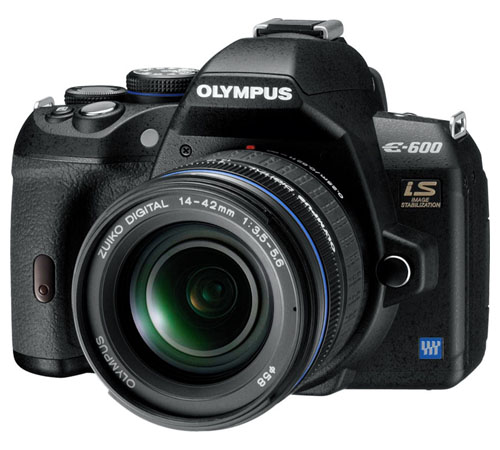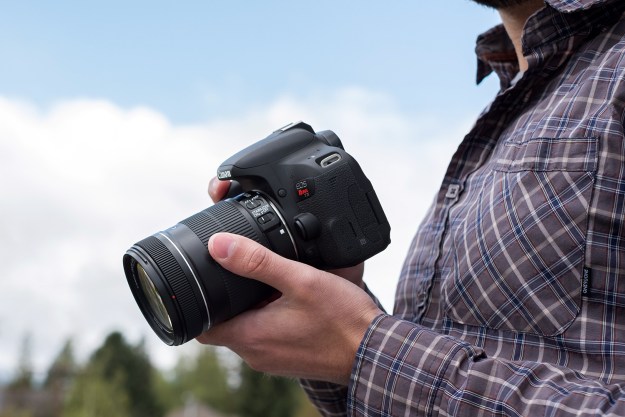 There are lots of people who enjoy digital photography but stick to consumer-oriented point-and-shoot cameras for one simple reason: DSLRs are expensive. Although we don’t ever expect the flexibility and power of DSLRs will ever come down in price far enough to really give point-and-shoot consumer cameras a run for their money, Olympus looks to be trying its best, announcing today its new E-600 digital single lens reflex camera, which is almost point-for-point feature comparable to the company’s recently introduced E-620…but comes in $100 cheaper, making it easier to folks to get into the DSLR arena.
There are lots of people who enjoy digital photography but stick to consumer-oriented point-and-shoot cameras for one simple reason: DSLRs are expensive. Although we don’t ever expect the flexibility and power of DSLRs will ever come down in price far enough to really give point-and-shoot consumer cameras a run for their money, Olympus looks to be trying its best, announcing today its new E-600 digital single lens reflex camera, which is almost point-for-point feature comparable to the company’s recently introduced E-620…but comes in $100 cheaper, making it easier to folks to get into the DSLR arena.
“With the E-600, Olympus has answered the call for a more affordable and creative camera that has everything you could need to get great results,” said Olympus’s senior marketing manager John Knaur, in a statement.
The E-600 offers a 12.3 megapixel resolution, a 2.7-inch swivel LCD display, in-body image stabilization, and a 4 fps burst mode that lets users capture action shots with ease. As with all DSLRs, the E-600 offers manual focus, but also features a fast autofocus system, both a live LCD preview and an optical viewfinder, face detection (with support for up to eight faces in a shot), a dust reduction system for keeping the sensor clean, and the ability to store images to CompactFlash (Type I or II), Microdrive, or xD media. For creative types—and perhaps to appeal to customers transitioning from the point-and-shoot world—the E-600 also offers in-camera Art Filters, including Pop Art, Soft Focus, and Pin Hole filter effects that can be applied to images right in-camera, with the results available right away on the LCD preview—although it’s bigger brother (the E-620) had three more Art Filters to show off. The E-620 also sports backlit buttons (which could be handy for shooting in dark conditions) and a two-shot multi-exposure feature—but if those features aren’t deal-breakers, the E-600 is substantially cheaper.
Olympus says the E-600 will be available in November with a ED 14–42mm ƒ3.5/5.6 Zuiko Digital Zoom Lens for an estimated price of $599.99; the E-620 currently goes for around $700 with the same lens, or $600 for a body-only configuration.
Editors' Recommendations
- The best photography tripods
- Cheap DSLRs: Huge savings on Canon, Nikon ahead of Mother’s Day
- Olympus OM-D E-M1 Mark III vs. OM-D E-M1X: High-performance flagships compared
- The Olympus PEN E-PL10 is a stylish beginner’s camera hiding last-gen hardware
- The best Cyber Monday camera deals from $300 GoPros to $400 DSLRs


